Experience the Cultural Heritage of Kaiping Diaolou: A UNESCO World Heritage Site
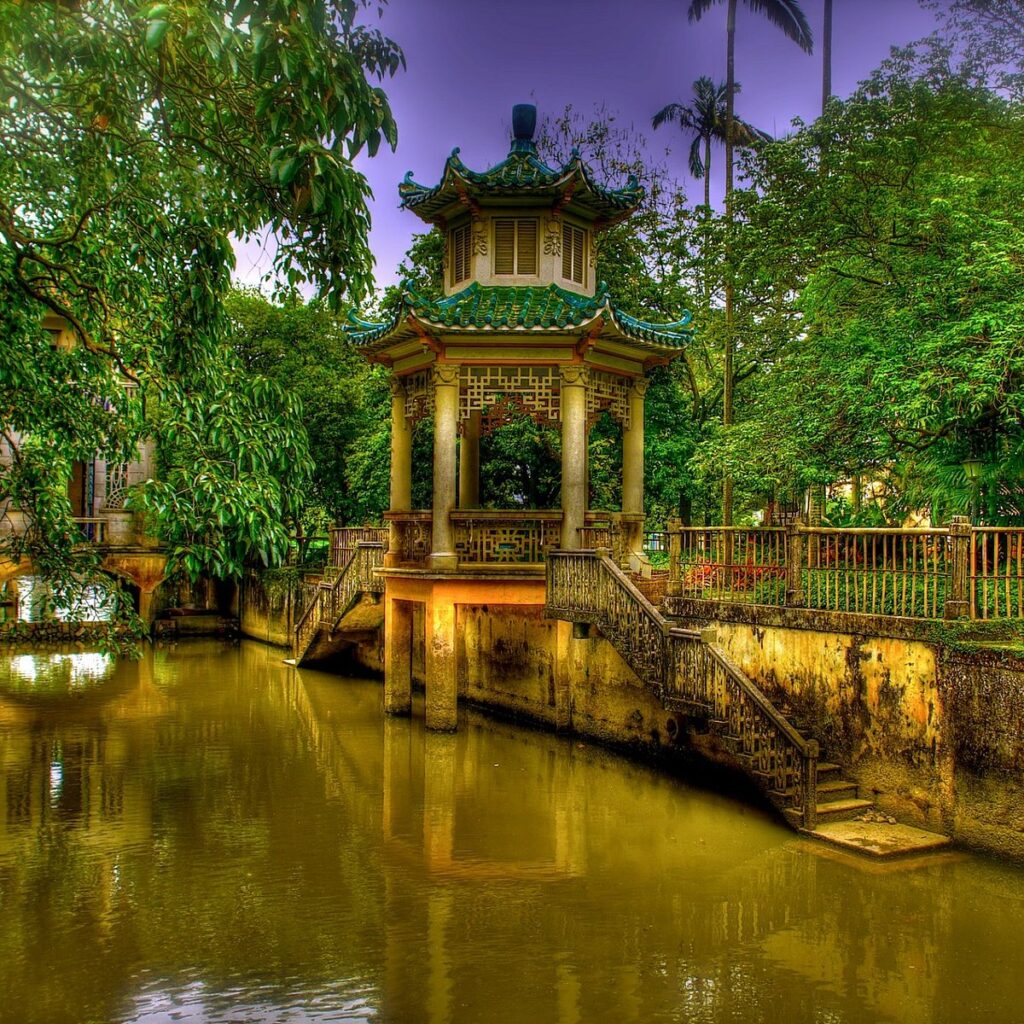
An Essential Guide to Visiting Kaiping Diaolou And Villages
Nestled in the heart of Guangdong province, the enchanting Kaiping Diaolou and Villages beckon travelers with their rich tapestry of history, architecture, and culture. Recognized as a UNESCO World Heritage site, these remarkable structures—multi-story watchtowers that once served as fortifications—tell the captivating story of the Chinese diaspora and the fusion of Eastern and Western architectural styles. Built between the 17th and 20th centuries, the diaolou stand as resilient guardians of the past, each one a unique testament to the ingenuity and resourcefulness of the local communities.
As you wander through the serene countryside, you’ll be mesmerized by the eclectic mix of architectural gems that dot the landscape—each tower offering a glimpse into a bygone era. The villages, with their charming streets and lush greenery, serve as a perfect backdrop for exploration, inviting visitors to delve deeper into the history and traditions of this fascinating region. From the picturesque Zili Village to the historical allure of Majianglong, every corner of Kaiping is steeped in stories waiting to be uncovered.
Whether you’re an architecture enthusiast, a history buff, or simply seeking a tranquil escape from the hustle and bustle of city life, a visit to Kaiping Diaolou and Villages promises an unforgettable experience that will stay with you long after you leave. Embrace the opportunity to step back in time and immerse yourself in the unique cultural heritage of this hidden gem in China.
In This Guide
- An Essential Guide to Visiting Kaiping Diaolou And Villages
- The Rich History and Legends of Kaiping Diaolou And Villages
- Main Highlights: What You Absolutely Can’t Miss
- Planning Your Visit: A Practical Guide
- Tickets: Prices, Booking, and Tips
- How to Get There: A Complete Transportation Guide
- Local Cuisine and Accommodation Nearby
- Frequently Asked Questions
- Final Thoughts on Your Trip
The Rich History and Legends of Kaiping Diaolou And Villages
Nestled in the picturesque landscape of Guangdong province, the Kaiping Diaolou and Villages offer a remarkable glimpse into China’s rich cultural tapestry and architectural ingenuity. These unique multi-story watchtowers, known as diaolou, are not only stunning examples of traditional Chinese architecture but also serve as powerful symbols of the region’s tumultuous history.
The origins of the diaolou date back to the 17th century during the Ming and Qing dynasties, a time when Kaiping was plagued by banditry and unrest. To protect their families and property, local residents, many of whom had emigrated to the West, constructed these fortified structures. The architectural style of the diaolou is a fascinating blend of Chinese and Western influences, reflecting the diverse experiences of the Chinese diaspora. Features such as ornate stone carvings, European-style domes, and traditional Chinese rooflines are common, making each tower a unique testament to its builder’s heritage.
As you wander through the villages of Zili, Majianglong, and Li Garden, you’ll encounter over 1,800 of these remarkable buildings, each with its own story to tell. Some of the most famous diaolou include the Yinonglu Villa, which towers majestically with six levels and offers breathtaking views of the surrounding countryside, and the iconic Ma-Xianglong Towers, renowned for their intricate designs and historical significance. The area was designated a UNESCO World Heritage Site in 2007, recognizing its exceptional cultural value and the need for preservation.
The legends associated with the diaolou are as captivating as their architecture. Local folklore whispers tales of brave families who defended their homes against marauding bandits, using these towers as lookout points and strongholds. It is said that on stormy nights, the ghostly echoes of past conflicts can still be heard, adding an air of mystery to the serene surroundings.
The history of Kaiping is also intertwined with the stories of its emigrants. From the late 19th century to the early 20th century, many villagers left for the United States, Canada, and other parts of the world in search of a better life. They returned with wealth and new ideas, which they infused into the construction of the diaolou, further enriching the architectural landscape.
Today, the Kaiping Diaolou and Villages stand as a testament to resilience and innovation, drawing travelers from around the globe eager to explore this hidden gem of Chinese heritage. Whether you are an architecture enthusiast, a history buff, or simply a curious traveler, the diaolou promise an unforgettable journey through time, where stories of the past blend seamlessly with the beauty of the present.
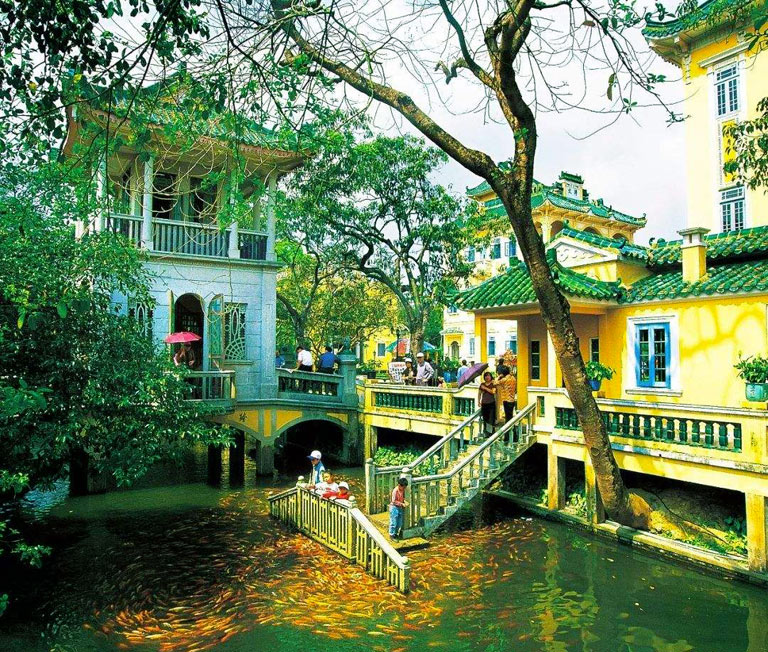
Kaiping Diaolou And Villages.
Main Highlights: What You Absolutely Can’t Miss
When exploring the enchanting Kaiping Diaolou and Villages, prepare to be captivated by a unique blend of history, architecture, and culture. Here are the main highlights you absolutely can’t miss during your visit:
1. The Iconic Diaolou Towers
The Kaiping Diaolou, or watchtowers, are the crown jewels of this UNESCO World Heritage site. Built between the 17th and 20th centuries, these multi-story structures served as fortifications against bandit raids. Expect to see an eclectic mix of architectural styles that reflect both Chinese and Western influences. Notable examples include the Yinonglu Villa in Zili Village, which features six levels and offers breathtaking views of the surrounding countryside.
2. Zili Village
Often regarded as the most picturesque village in Kaiping, Zili Village is a wonderful place to start your exploration. The village boasts a well-preserved cluster of Diaolou that showcases the unique architectural charm of the region. Take a leisurely stroll around the scenic pond adorned with colorful wooden walkways, leading you to the impressive towers. Don’t forget your camera; the views are simply stunning!
3. Majianglong Village
Just a short distance from Zili, Majianglong Village provides a quieter, yet equally fascinating experience. This village features less tourist traffic and offers a more authentic glimpse into local life. Explore the various Diaolou structures and enjoy the serene surroundings, which serve as a perfect backdrop for reflection and photography.
4. Chikan Town
For a taste of history infused with European flair, head to Chikan Town. This area is famous for its European-style streets and buildings, a testament to the influence of overseas Chinese who returned from abroad. While there, enjoy a meal at one of the charming local restaurants and soak in the atmosphere of this unique locale.
5. Kaiping Garden
After a day of exploration, unwind at Kaiping Garden, a beautifully designed park that showcases traditional Chinese landscaping. The lush greenery, elegant pavilions, and tranquil ponds create a perfect setting for relaxation. It’s a great spot to reflect on your journey through the historical villages.
6. Guided Tours
To make the most of your visit, consider joining one of the many guided tours available. Options range from half-day excursions to comprehensive full-day experiences that include multiple villages. These tours often provide insightful narratives about the history and cultural significance of the Diaolou, enriching your understanding of this remarkable site.
7. Culinary Delights
Don’t overlook the local cuisine! The visitor center at Li Garden Village offers delightful dining options where you can savor authentic dishes. Sample local specialties and enjoy a meal while taking in the beautiful surroundings.
8. Accessibility and Transportation
Getting around the Kaiping area is convenient, with bus routes connecting the various villages. Additionally, the visitor center at Li Garden provides helpful information and resources, including EV charging points, making it easier for travelers to explore this UNESCO gem.
Final Thoughts
Kaiping Diaolou and Villages offer an extraordinary glimpse into China’s architectural heritage and the lives of its past inhabitants. Whether you’re an architecture enthusiast, a history buff, or simply seeking a unique travel experience, this destination is sure to leave a lasting impression. Plan your visit carefully, and you’ll uncover the rich tapestry of culture and beauty that makes Kaiping a must-see on any itinerary.
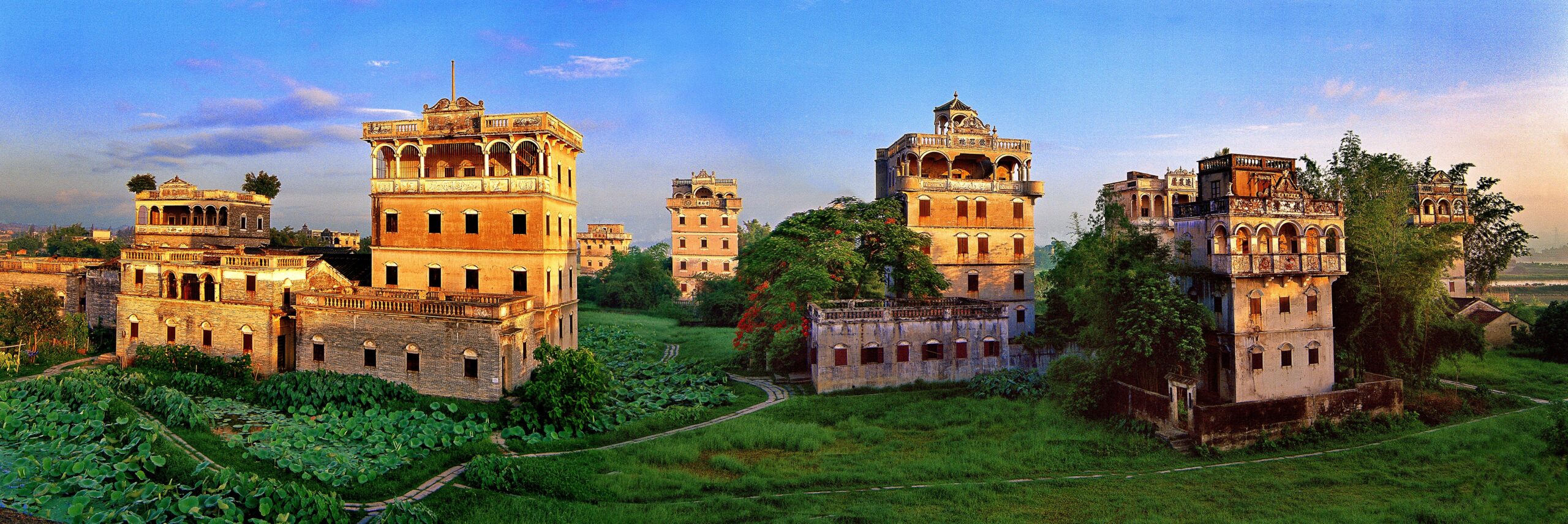
Kaiping Diaolou And Villages.
Planning Your Visit: A Practical Guide
Visiting the Kaiping Diaolou and Villages is a journey through time, offering a glimpse into a unique blend of architectural styles and historical significance. As you plan your trip to this UNESCO World Heritage site, here are some practical tips and information to enhance your experience.
Getting There
Location:
Kaiping is located in Guangdong Province, approximately 100 kilometers (about 62 miles) from Guangzhou. The most convenient ways to reach Kaiping include:
- By Train: High-speed trains from Guangzhou to Kaiping take roughly 1.5 hours. Check schedules in advance for the best options.
- By Bus: Regular buses operate between Guangzhou and Kaiping. The trip usually takes around 2-3 hours.
- By Car: If you prefer driving, renting a car is a viable option. The journey by car allows you to explore the surrounding countryside.
Best Time to Visit
The ideal time to visit Kaiping is during the spring (March to May) and autumn (September to November) months. These seasons offer pleasant weather, making your exploration more enjoyable. Summer can be hot and humid, while winters are mild, but it may rain.
Opening Hours
The Kaiping Diaolou and Villages are open from 8:30 AM to 5:30 PM every day. Plan to spend at least 3 hours exploring the area, but consider a full day if you want to visit multiple sites.
Admission
Tickets can be purchased at the Li Garden Village visitor center, where you can also find helpful information about the various villages, including Zili, Li Garden, and Majianlong. Prices may vary depending on the number of villages you wish to visit.
Exploring the Villages
- Zili Village: Known for its picturesque landscapes and well-preserved diaolou, Zili is often the most visited. Don’t miss the stunning Yinonglu Villa, which offers panoramic views from its top level.
- Li Garden: This area features a beautiful garden and is perfect for a leisurely stroll. It also has facilities for purchasing tickets and obtaining information.
- Majianglong Village: Less touristy than Zili, this village allows for a more authentic experience of rural life and architecture.
Local Transportation
Within the Kaiping area, a bus route connects the villages, making it easy to hop from one site to another. If you have an electric vehicle, charging points are available at the visitor center.
Dining Options
For a taste of local cuisine, the Li Garden visitor center offers dining facilities. Alternatively, explore local eateries in the villages to sample authentic dishes. Don’t forget to try the regional specialties!
Tips for Travelers
- Stay Hydrated: Bring water, especially during warmer months, as you may spend a lot of time outdoors.
- Wear Comfortable Shoes: The best way to explore the villages is on foot, so wear comfortable footwear.
- Bring a Camera: The unique architecture and scenic countryside provide countless photo opportunities.
- Respect Local Customs: As you visit the villages, be mindful of local traditions and the privacy of residents.
- Plan for Connectivity: Wi-Fi may not be widely available, so consider downloading maps and information ahead of time.
Conclusion
The Kaiping Diaolou and Villages offer a remarkable blend of history, culture, and architecture. By planning your visit thoughtfully, you can fully appreciate the beauty and significance of this extraordinary site. Enjoy your journey into the past!
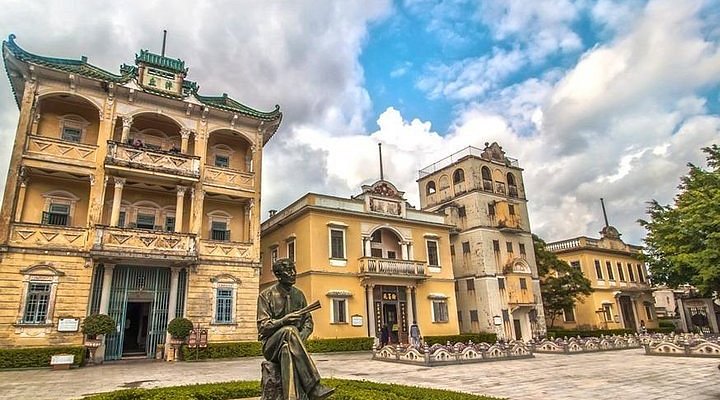
Kaiping Diaolou And Villages.
Tickets: Prices, Booking, and Tips
When planning your visit to the Kaiping Diaolou and Villages, it’s essential to know how to secure your tickets, what the prices are, and some handy tips for a smooth experience. This UNESCO World Heritage site, known for its unique architectural heritage and picturesque countryside, is a must-see for any international traveler.
Ticket Prices and Booking
Tickets for the Kaiping Diaolou and Villages vary depending on the specific areas you want to explore. Here’s a general overview:
- Entry Fees: Expect to pay around ¥50 to ¥100 (approximately $7 to $15) for access to individual villages. This often includes entry to key watchtowers and associated historical sites.
- Combined Tickets: Some visitors opt for combined tickets that allow access to multiple villages, which can be more economical. Prices for these can range from ¥150 to ¥300 (about $22 to $45), depending on the number of sites included.
- Guided Tours: If you prefer a more structured experience, consider booking a guided tour. Prices for private day tours from major cities like Guangzhou typically start at around $200 and can go up to $584 for more extensive excursions that last several days.
Booking Tips
-
Advance Reservations: It’s advisable to book your tickets in advance, especially during peak travel seasons (spring and autumn). This ensures you won’t miss out on the opportunity to explore this beautiful site.
-
Group Discounts: If you’re traveling with a group, inquire about discounts or special packages that can save you money while enhancing your experience.
-
Visitor Centers: Upon arrival, head to visitor centers like the one at Li Garden Village, where you can purchase tickets on-site and gather information about the various villages, transportation options, and available amenities.
-
Public Transport: While many tours offer transport, you can also explore the area independently using local buses. These buses connect the main villages and make it easier to navigate without a private vehicle.
-
Free Cancellation: Many tours offer free cancellation options, which can provide peace of mind if your travel plans change unexpectedly.
Additional Considerations
- Opening Hours: The site is generally open from 8:30 AM to 5:30 PM daily, so plan your visit accordingly to maximize your time exploring the area.
- Duration of Visit: Allocate at least 3 to 4 hours to soak in the sights, but a full day is recommended for a more leisurely exploration, especially if you wish to visit multiple villages.
- Cultural Etiquette: Be respectful of the local customs and the historical significance of the buildings. Photography is generally allowed, but be mindful of any restrictions in certain areas.
By keeping these tips in mind, you’ll be well-prepared to enjoy the enchanting architecture and serene landscapes of the Kaiping Diaolou and Villages. Happy travels!
How to Get There: A Complete Transportation Guide
Reaching the enchanting Kaiping Diaolou and Villages can be an adventure in itself, and knowing your transportation options will help ensure a smooth journey. This UNESCO World Heritage site, famous for its unique multi-story watchtowers, is located in Guangdong Province, about 100 kilometers (62 miles) from Guangzhou. Here’s a comprehensive guide to help you navigate your way there.
From Guangzhou
By Train
- High-Speed Train:
- Duration: Approximately 1.5 hours.
- Departure: Trains leave from Guangzhou South Railway Station.
- Arrival: Get off at Kaiping Station.
-
Tip: Once you arrive at Kaiping Station, take a taxi or a local bus to reach the Diaolou villages.
-
Regular Train:
- Duration: 2-3 hours.
- Departure: Various stations in Guangzhou offer regular trains.
- Arrival: Alight at Kaiping Railway Station.
- Tip: Similar to the high-speed option, taxis and buses are available for the final leg of your journey.
By Bus
- Direct Bus Services:
- Duration: Around 2 hours.
- Departure: Buses leave from Guangzhou Provincial Bus Station or Gaojiu Bus Station.
- Arrival: Buses will drop you off at Kaiping Bus Station.
- Tip: From the bus station, you can take a local taxi or catch a bus to various Diaolou sites.
From Shenzhen
By Train
- High-Speed Train:
- Duration: About 2 hours.
- Departure: Trains depart from Shenzhen North Railway Station.
- Arrival: Disembark at Kaiping Station.
-
Tip: Use local transport for your final destination.
-
Regular Train:
- Duration: Approximately 3 hours.
- Tip: Similar local transport options apply here as well.
By Bus
- Direct Bus Services:
- Duration: Approximately 3-4 hours.
- Departure: Buses leave from Shenzhen Futian Bus Station.
- Arrival: Arriving at Kaiping Bus Station, you can then take a taxi or bus to the Diaolou villages.
Local Transportation in Kaiping
Once in Kaiping, getting around to the various Diaolou sites is convenient:
- Local Buses: There are bus routes connecting the main villages, making it easy to hop from one historical site to another.
- Taxis: Readily available and a good option for a more comfortable ride. Ensure you agree on a fare beforehand or ask for the meter to be used.
- Bicycle Rentals: For those who prefer a leisurely pace, renting a bicycle can offer a unique way to explore the scenic countryside between the villages.
- Guided Tours: Many travelers opt for private day tours that include transportation, providing a hassle-free experience while learning more about the history and architecture of the Diaolou.
Tips for a Smooth Journey
- Plan Ahead: Check train and bus schedules in advance to ensure availability, especially during peak travel seasons.
- Language Considerations: While major transportation hubs may have English speakers, it’s helpful to have your destination written in Chinese to show to drivers or bus staff.
- Cash: Keep some cash handy, as not all taxis or local vendors accept credit cards.
By following this transportation guide, your visit to the Kaiping Diaolou and Villages promises to be not only enriching but also easy and enjoyable. Embrace the journey as you explore these architectural marvels steeped in history!
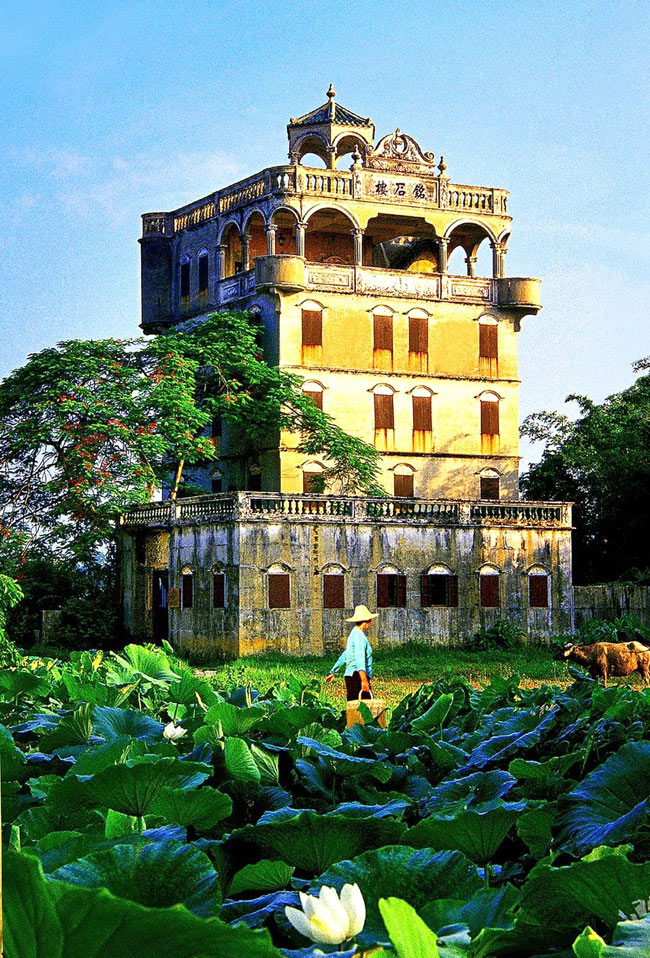
Kaiping Diaolou And Villages.
Local Cuisine and Accommodation Nearby
When exploring the enchanting Kaiping Diaolou and Villages, your journey will be enriched not only by the stunning architecture but also by the local flavors and comfortable accommodations that await you in the region. Here’s a curated selection of delightful dining options and cozy places to rest after a day of exploration.
Dining Options
Li Garden Restaurant
Located within the Li Garden Village visitor center, this restaurant is an excellent spot to enjoy a meal before or after your visit to the diaolou. The menu features a variety of traditional Cantonese dishes, with fresh ingredients sourced from the local area. Don’t miss their signature dishes like steamed fish and stir-fried seasonal vegetables, perfect for recharging your energy while enjoying the scenic views of the garden.
Chikan European Style Street
Just a short distance from the diaolou, this vibrant area offers a mix of cuisines in a charming setting reminiscent of European architecture. Wander through the cobblestone streets and choose from an array of eateries serving everything from local dim sum to western-style meals. The atmosphere is lively, making it a great place to relax after a day of sightseeing.
Zili Village Snack Stalls
For a taste of local culture, dive into the street food scene in Zili Village. Here, you can sample a variety of traditional snacks, such as wonton noodles, dumplings, and sweet rice cakes. These stalls not only provide delicious bites at affordable prices but also allow you to mingle with locals and experience the vibrant community spirit of Kaiping.
Accommodation Suggestions
Kaiping Liyuan Hotel
Conveniently situated near the major attractions, this hotel offers comfortable rooms with modern amenities and a touch of local decor. Guests can enjoy a peaceful stay amidst lush gardens while being just a short drive from the Kaiping Diaolou. The hotel also features an on-site restaurant serving both local and international dishes.
Kaiping Diaolou Hotel
This hotel is themed around the region’s unique architecture, providing a cozy and authentic experience. Rooms are designed to reflect the local culture, and the hotel is within walking distance of several diaolou. Guests appreciate the friendly service and the opportunity to immerse themselves in the local heritage.
Chikan Inn
For travelers seeking a more intimate experience, Chikan Inn offers charming accommodations in a historical setting. Nestled in the heart of Chikan European Style Street, this inn provides a unique blend of traditional Chinese hospitality and modern comforts. Enjoy the convenience of nearby attractions, along with the opportunity to explore the picturesque streets right outside your door.
Whether you’re savoring the local cuisine or resting at one of these welcoming lodgings, your visit to the Kaiping Diaolou and Villages will be a memorable culinary and cultural adventure.
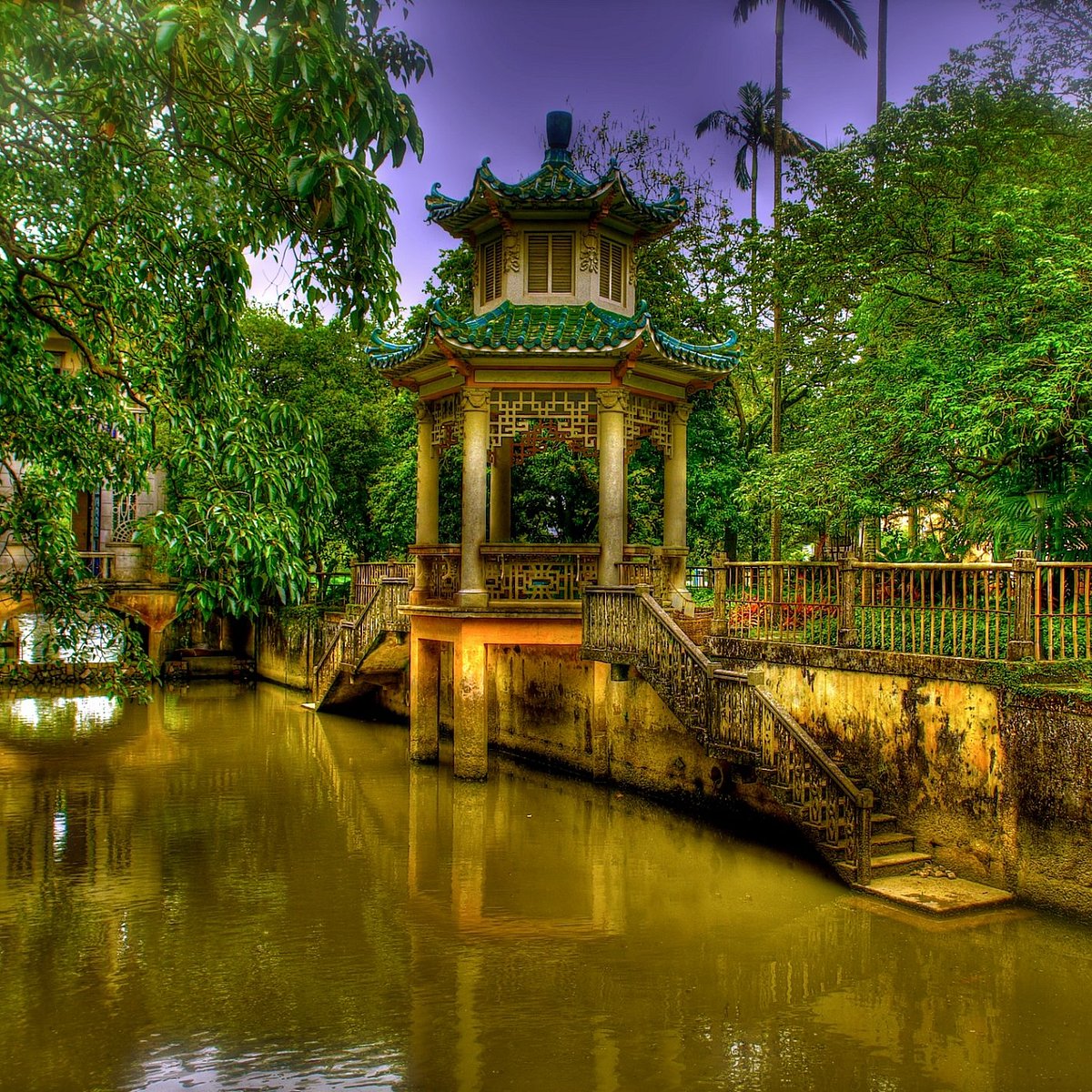
Kaiping Diaolou And Villages.
Frequently Asked Questions
Frequently Asked Questions about Kaiping Diaolou and Villages
-
What are the Kaiping Diaolou?
The Kaiping Diaolou are unique multi-story watchtowers, built primarily between the 17th and 20th centuries, that served as fortifications against banditry. These structures blend Chinese and Western architectural styles and are now recognized as a UNESCO World Heritage site. -
How much time should I allocate for a visit?
Plan to spend at least three hours exploring the Diaolou and the surrounding villages. If you wish to delve deeper into the history and architecture, consider a full day to fully appreciate the area. -
What are the opening hours?
The Kaiping Diaolou and Villages are open daily from 8:30 AM to 5:30 PM. Be sure to arrive early to make the most of your visit! -
How can I get to Kaiping from Guangzhou?
There are several options for traveling from Guangzhou to Kaiping, including private car hires, buses, and organized tours. The journey typically takes around two hours, making it an accessible day trip. -
Are guided tours available?
Yes, guided tours are available and highly recommended! They provide in-depth information about the history and significance of the Diaolou. Options range from private day tours to all-inclusive packages that cover multiple villages. -
What should I wear and bring?
Wear comfortable clothing and sturdy shoes, as you may want to walk through the villages and explore the towers. Don’t forget to bring your camera, sunscreen, and plenty of water, especially during the warmer months. -
Is it family-friendly?
Absolutely! Kaiping Diaolou and Villages are suitable for family visits. Children will enjoy exploring the towers and learning about the unique architecture and history of the area. -
Are there amenities available for visitors?
Yes, there are visitor centers where you can purchase tickets, find information, and enjoy local cuisine. Additionally, facilities such as EV charging points are available for those driving to the site.
Final Thoughts on Your Trip
As your journey through the enchanting Kaiping Diaolou and Villages comes to an end, you leave not just with memories of unique architecture but with a deeper appreciation for the stories embedded in these structures. Each diaolou tells a tale of resilience and cultural fusion, reflecting the rich history of the Hakka people who built them to withstand both time and turmoil.
Strolling through the picturesque landscapes, you will have experienced the harmonious blend of Chinese and Western influences, which creates a truly distinctive atmosphere. From the serene countryside views to the intricate details of each tower, Kaiping invites travelers to pause and absorb the beauty that surrounds them.
Whether you explored the vibrant Zili Village or marveled at the architectural wonders of Majianlong, the essence of Kaiping lingers long after your visit. This UNESCO World Heritage site is not just a destination; it’s a connection to the past, a celebration of heritage, and an inspiration for future generations.
As you head back home, carry with you the spirit of Kaiping—a place where history and nature intertwine, waiting to be discovered by those with a curious heart. Until your next adventure, may your travels continue to inspire and enrich your life.